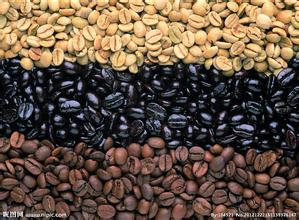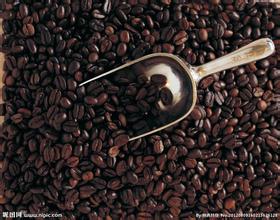Varieties of coffee beans how long does it take for coffee trees to blossom
Liberian species
The Liberian species, known as the large grain species, is native to Liberia in Africa and to a few countries such as Malaysia. It has a slightly shorter history than the other two coffee trees. The Liberian coffee tree is suitable for lowland cultivation. It has a tall and strong trunk, which is 18 meters high, large and tough leaves, and large fruits and coffee beans. Its seed coat clings to the kernel and is scarlet when mature. Quoted flavor is strong, caffeine content is medium, irritation is strong, and quality is poor. Due to its unique taste, low demand and small cultivation value, production is also small, less than 5% of the world's coffee production
Non-commercial reprints, please indicate the source. Robasta species
Bean shape is larger, the front gradually round, the back was round convex, crack straight.
Robasta coffee trees are native to Madagascar in central and western Africa and Indonesia in Asia, and their production accounts for about 20% to 30% of the world's production. Robasta coffee tree is suitable for planting in lowlands below 500 meters above sea level. It has strong adaptability to the environment. It can resist harsh climate, resist pests and diseases. It does not need too much artificial care when preparing soil, weeding and pruning. It can grow freely in the wild. It is an easy to cultivate coffee tree. However, the finished product tastes bitter than Arabica, the caffeine content is also relatively high, and the quality is also inferior, so most of them are used to make instant coffee. Because it is mainly grown in Africa, most Africans drink robasta coffee.
Non-commercial reprints, please indicate the source. arabica species
Bean shape smaller, positive was long oval, narrow and tortuous cracks in the middle, beans on the back of the arc shape more flat.
Arabica coffee is produced in Brazil, Colombia, Central America, Costa Rica, Guatemala, Jamaica, Mexico and Ethiopia in South America. Arabica coffee beans are large, uniform in size, uniform in color and shiny. Coffee beans that are generally familiar to everyone, such as Brazil Sandos, Sumatra Mantenin, Yemen Mocha, Jamaica Blue Mountain, etc., are all Arabica high-quality coffee beans.
Arabica coffee is difficult to grow. It prefers mild days and cooler nights. Cold, hot and humid climates can kill it. Arabica coffee trees need to be planted on sloping slopes at high altitudes. Those planted in high altitudes (600 - 1800 meters) grow more vigorously, and special climatic conditions are required-the average temperature of the whole year is about 20 degrees Celsius, there is plenty of rainfall, and there is no frost. Only more than 50 countries in the world have such conditions, and they are all about 160 kilometers north and south of the equator. Its harvest must be carried out manually climbing up and down, which is more difficult. But because Arabica coffee beans have a particularly good aroma, balanced taste, and low caffeine content, the actual amount of coffee planted accounts for about 70% of the total.

Important Notice :
前街咖啡 FrontStreet Coffee has moved to new addredd:
FrontStreet Coffee Address: 315,Donghua East Road,GuangZhou
Tel:020 38364473
- Prev

Morphological characteristics of Coffee trees the latest Coffee Information in China
The ripe coffee berries look like cherries and are bright red with sweet flesh and contain a pair of seeds, namely coffee beans (Coffee Beans). Coffee varieties can be divided into small-grain, medium-grain and large-grain species, the former contains low caffeine content and strong flavor, while the latter two have high caffeine content but poor flavor. The coffee sold in the world is generally made up of small and medium seeds in different proportions.
- Next

The Classification of Coffee beans: a Sociological Analysis of the reasons for Starbucks' success
Botanical classification of coffee beans: the circular zone at the tip of the north-south regression line, which we call Coffee Zone or Coffee Belt. Because the area is rich in rich organic matter and volcanic ash soil, the average temperature is about 20 degrees, the average annual rainfall is between 1000 and 2000mm, and there is no large temperature difference during the year, so it has become an ideal place for coffee production. Growing coffee is strict.
Related
- Does Rose Summer choose Blue, Green or Red? Detailed explanation of Rose Summer Coffee plots and Classification in Panamanian Jade Manor
- What is the difference between the origin, producing area, processing plant, cooperative and manor of coffee beans?
- How fine does the espresso powder fit? how to grind the espresso?
- Sca coffee roasting degree color card coffee roasting degree 8 roasting color values what do you mean?
- The practice of lattes: how to make lattes at home
- Introduction to Indonesian Fine Coffee beans-- Java Coffee producing area of Indonesian Arabica Coffee
- How much will the flavor of light and medium roasted rose summer be expressed? What baking level is rose summer suitable for?
- Introduction to the characteristics of washing, sun-drying or wet-planing coffee commonly used in Mantenin, Indonesia
- Price characteristics of Arabica Coffee Bean Starbucks introduction to Manning Coffee Bean Taste producing area Variety Manor
- What is the authentic Yega flavor? What are the flavor characteristics of the really excellent Yejasuffi coffee beans?

